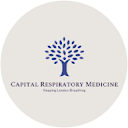In my latest blog series, I’ve been talking knee replacement surgeries – everything from anatomy to recovery. In part one, I wrote about how the knee works and why you might need a replacement. Part two covered working on your prehab, and today in part three I’ll be talking about recovery post surgery.
The recovery timeline: what to expect
“Before my surgery, I was really worried about the recovery process,” explains Michael, a 64-year-old former football coach who had his knee replaced last year. “But having clear expectations made a huge difference to my confidence.”
Every recovery journey is unique, but understanding general timelines can help you prepare mentally and physically. Here’s what typically happens:
Immediate post-surgery (0-2 weeks)
This initial period focuses on pain management, reducing swelling, and achieving basic mobility. Key goals include:
- Getting comfortable with walking aids such as crutches
- Establishing a consistent exercise routine
- Regaining full knee extension (straightening)
- Managing swelling through ice, compression, elevation and gentle movement
Priority exercises: Gentle ankle pumps, quadriceps sets, and supported knee extensions. [Link to my TAKQG video]
Early recovery (2-6 weeks)
During this phase, most people transition away from walking aids and begin more functional exercises:
- Improving walking pattern
- Building muscle strength and endurance
- Increasing knee flexion (bending)
- Scar tissue management
Priority exercises: Supported knee bends, step-ups, and balance work.
Mid-recovery (6-12 weeks)
At this stage, focus shifts toward normalising daily activities:
- Refining your walking pattern
- Building endurance for longer activities
- Returning to work (depending on your job demands)
- More challenging strength training
Long-term recovery (3-12 months)
This final phase focuses on returning to your desired lifestyle:
- Sport-specific training if appropriate
- More challenging balance and coordination activities
- Fine-tuning any remaining movement patterns
Custom vs standard implants: impact on recovery
The type of implant you receive can significantly impact your recovery timeline. Custom-made implants that match your specific anatomy may allow for faster recovery and fewer restrictions. With standard implants, you might need to be more cautious with certain movements for 6-12 weeks.
Regardless of implant type, don’t drive until you have enough confidence in your operated leg to manage an emergency stop. Your surgeon and physiotherapist will give you specific guidance based on your procedure and progress.
Hands-on care: beyond exercise
Unlike keyhole procedures, knee replacement surgery requires a larger incision. Proper scar tissue management is crucial for full recovery. Professional physiotherapy often includes:
- Soft tissue mobilisation around the scar
- Joint mobilisation to optimise knee movement
- Massage and myofascial release for muscle tension
- Guided progression of exercises
“The hands-on work my physiotherapist did with my scar made all the difference,” says Janet, who had her knee replaced eight months ago. “At first I was hesitant to touch it, but learning how to properly mobilise the tissue prevented it from restricting my movement.”
Common challenges and how to overcome them
- Challenge 1: persistent swelling
- Solution: Consistent elevation, compression stockings, gentle ankle pumps, and avoiding prolonged standing.
- Challenge 2: difficulty regaining full extension
- Solution: Prioritise extension exercises early, avoid prolonged sitting with knees bent, and use a rolled towel under your ankle while lying down.
- Challenge 3: knee stiffness
- Solution: Regular gentle movement throughout the day, appropriate pain management before exercise, and proper hydration.
- Challenge 4: sleep disruption
- Solution: Finding comfortable sleeping positions with pillow support, timing pain medication appropriately, and maintaining good sleep hygiene.
Building on your prehab success
If you followed a structured prehab programme before surgery (as discussed in part two), you’ll have a significant advantage during recovery.
Russell, a 64-year-old who diligently prepared for six months before his surgery, found that his prehab efforts paid off tremendously: “The exercises felt familiar after surgery because I’d been doing similar movements for months. My body already knew what to do, and my muscles hadn’t completely wasted away during the waiting period.”
The strength, control and mobility you develop before surgery create a foundation that makes post-operative exercises easier to perform correctly. Your brain and muscles have already established the necessary movement patterns, allowing you to focus on healing rather than learning new skills.
The ideal recovery journey
Your recovery will be highly individual, but these factors consistently contribute to successful outcomes:
- Consistent, appropriate exercise: Following your programme faithfully, without over or under-doing it
- Professional guidance: Working with healthcare providers who can adjust your plan as needed
- Patience with progress: Understanding that healing follows a non-linear path
- Whole-body approach: Addressing nutrition, sleep, stress management and overall wellbeing
- Social support: Engaging family, friends or support groups during challenging periods
Your next steps
Whether you’re still waiting for surgery or in the early stages of recovery, having a personalised approach makes all the difference. Based on working with hundreds of knee replacement patients over my 20+ years as a physiotherapist, I’ve developed resources to help you navigate this journey.
Take my FREE 2-minute knee function assessment to get:
- A better understanding of your current knee function
- Insight into which areas need most attention
- Direction toward appropriate resources for your stage of recovery
This quick assessment is just the first step in understanding your knee’s specific needs. It will help point you in the right direction for further evaluation or exercises that address your particular circumstances.
Remember: a successful knee replacement isn’t just about the surgery itself – it’s about the preparation beforehand and the recovery journey afterward. With the right approach, many of my patients tell me their knee replacement has been life-changing, allowing them to return to activities they thought were lost forever.







